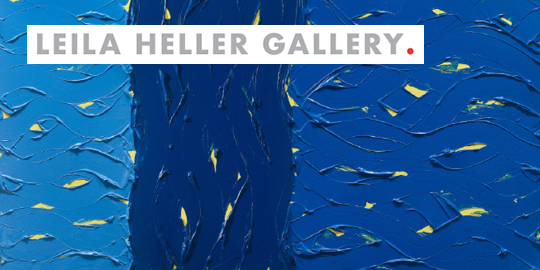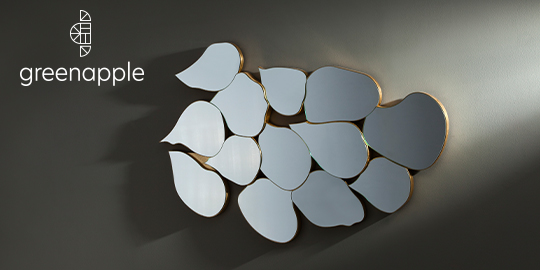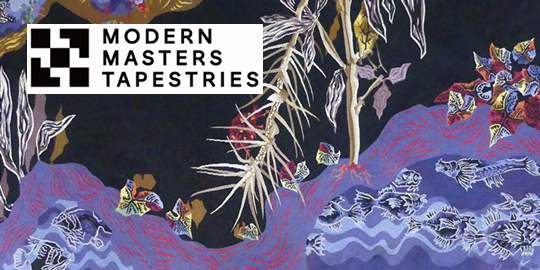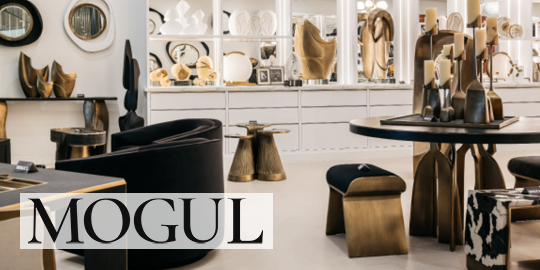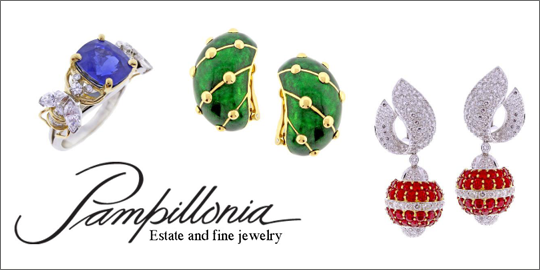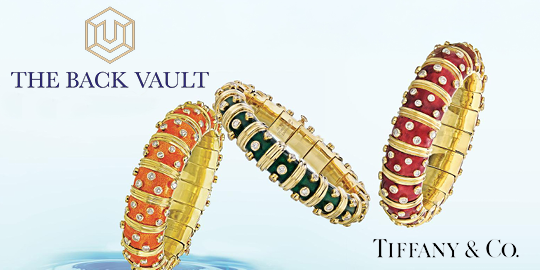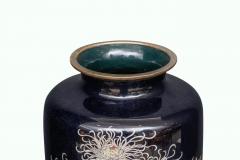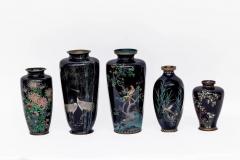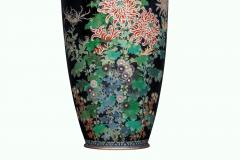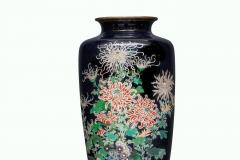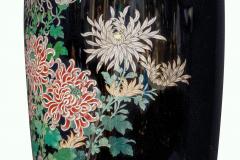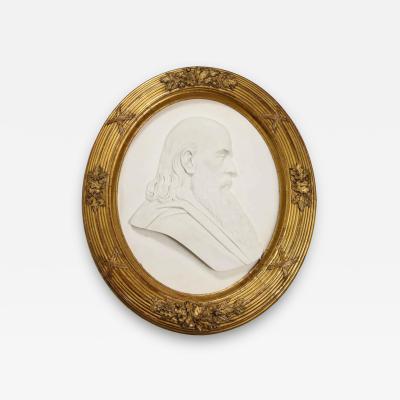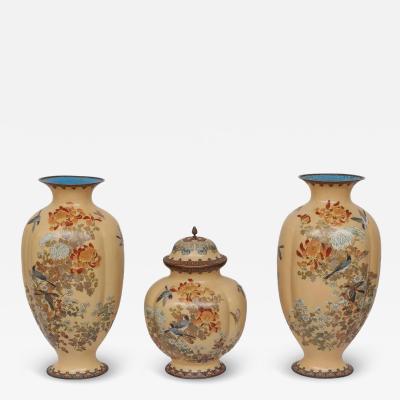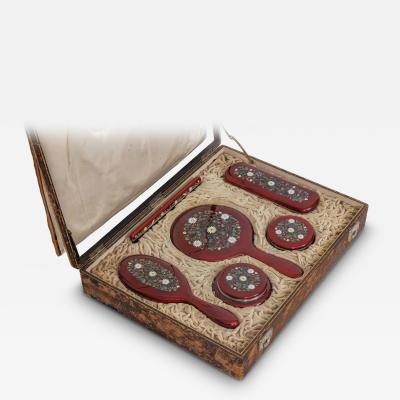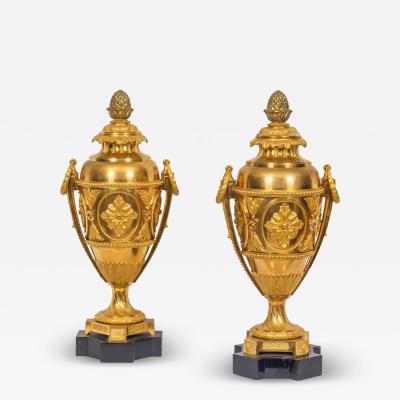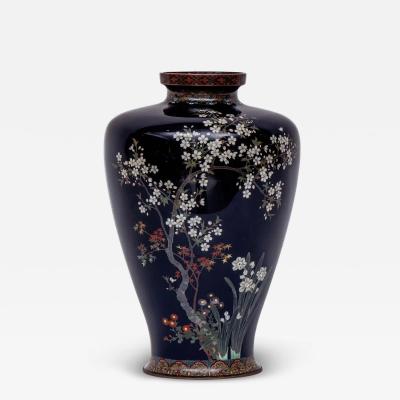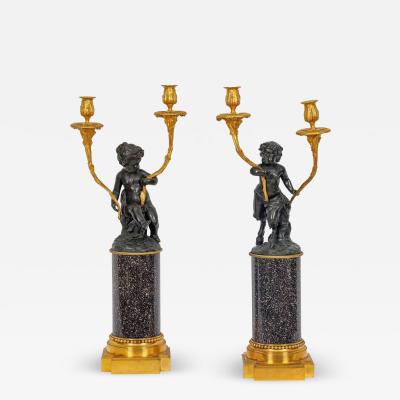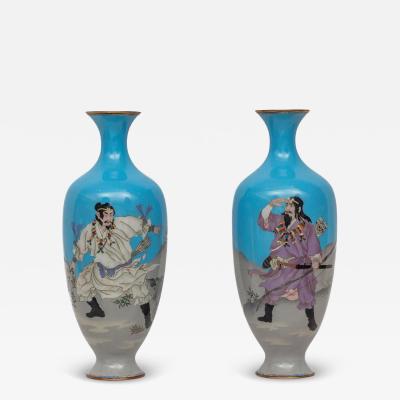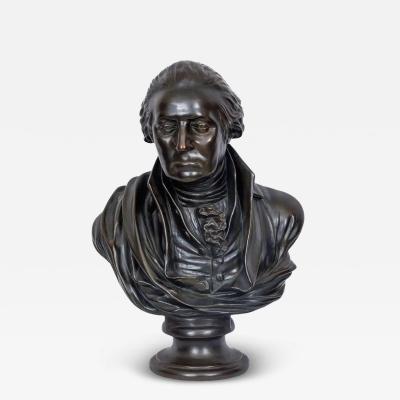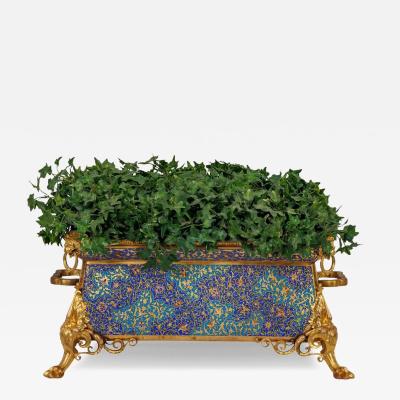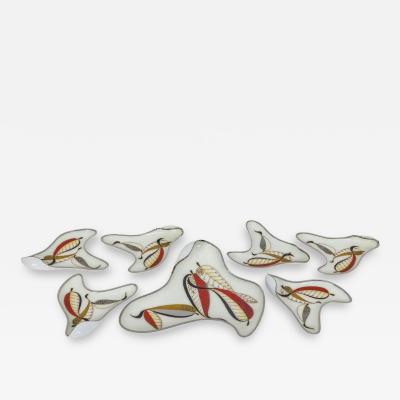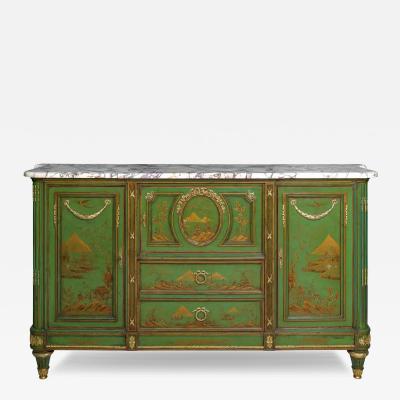Japanese Meiji Silver-Wire Cloisonné Enamel Vase with Chrysanthemums, Inaba Co.
-
Description
A Japanese Meiji Period Silver-Wire Cloisonné Enamel Vase with Chrysanthemums on a Midnight Ground, Attributed to Inaba
A magnificent Japanese cloisonné enamel vase from the Meiji period, attributed to the celebrated Inaba workshop, distinguished for its exceptional silver-wire technique and painterly approach to naturalistic design. The vase is of tall, elegant baluster form, its surface covered with a flawless midnight-black enamel ground that provides a dramatic contrast to the brilliant floral decoration.
The central design is a luxuriant profusion of chrysanthemums, Japan’s most iconic and auspicious flower, long associated with longevity, rejuvenation, and imperial authority. Rising in layered clusters, the blooms are worked in the finest silver wire, their petals unfurling in shades of ivory, coral red, and pale lavender with remarkable delicacy. Each blossom exhibits subtle variations of tone and shading, while the surrounding leaves are rendered in a spectrum of verdant greens and bluish-greens, capturing the seasonal vitality of the autumn garden.
At the base, smaller blossoms in yellow and purple emerge among dense foliage, creating a rhythmic balance between bold central blooms and finely detailed accents. The arrangement rises upward in vertical grandeur, giving the vase both dynamism and harmony. Every element is painstakingly outlined in pure silver wire, testifying to the technical brilliance and refinement for which the Inaba studio was renowned.
The mouth and foot are encircled with geometric border designs in silver wire, framing the naturalistic composition with elegance and restraint. The combination of painterly naturalism, flawless enamel execution, and meticulous wirework exemplifies the pinnacle of Japanese cloisonné production during the late nineteenth century.
Chrysanthemums held deep cultural resonance in Meiji Japan, not only as a symbol of the imperial household but also as a motif celebrated in art and literature. In cloisonné enameling, their intricate layered petals provided the perfect subject for demonstrating the virtuosity of the enameler’s craft. This vase, with its bold yet balanced arrangement, is a masterclass in both technical innovation and artistic design.
Comparable examples of Inaba’s chrysanthemum-decorated cloisonné can be found in the Victoria and Albert Museum, London, as well as in major private collections worldwide. Works of this quality and scale are increasingly rare to encounter outside museum collections, making this an especially desirable example for the connoisseur of Japanese decorative arts.
A true museum-quality masterpiece, representing the height of Meiji-period cloisonné artistry and the enduring beauty of Japan’s imperial flower.
9.5" high x 5" diameter
Very good condition, no damages noted. -
More Information
Origin: Japan Period: 19th Century Condition: Good. Styles / Movements: Other, Traditional Patterns: Asian/Oriental Incollect Reference #: 822782 -
Dimensions
H. 9.5 in; Diam. 5 in; H. 24.13 cm; Diam. 12.7 cm;
Message from Seller:
For four generations, Solomon Treasure has built a distinguished reputation for offering rare and important 18th-19th century antiques and fine art, serving museums, collectors, and designers worldwide. Located in the heart of Manhattan, we specialize in exceptional pieces ranging from Napoleon Neoclassical to Art Deco and Middle Eastern Islamic treasures. Contact: Mory Talasazan, Director | mory@solomontreasureny.com | 917.686.9732 |


